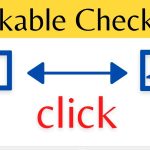SEO web design is a process of creating websites that search engines can scan, index and understand. Search engine crawlers cannot “read” and “interact” with a website as with a human being. For this reason, they access the HTML code of the site and look for signals that help them understand the structure of the site and the meaning of its content.
Why is SEO important for Web Design?
Following SEO Friendly design practices for websites is important to achieve a result that meets both user needs and search engines. If search engines fail to understand, which topics a site speaks about, it may have a negative impact on traffic and positioning. Now let’s see how to design websites that combine both the needs of users and search engines.
These are the 6 principles to follow …
- Accessibility
- Site structure
- URL structure
- Link structure
- On-page SEO optimization
- User experience
Note: The SEO applied to web design does not concern the graphic aspect of the website or the colors you use. These are subjective elements and not something important to Google. What is important is how a website is structured and if it sends the right signals to satisfy the various search engine ranking factors.
1) Accessibility
Search engines without problems index a SEO friendly website. This is the first principle of SEO Friendly Web Design, and it is very important.
To ensure that the website and its contents are indexed correctly, you must keep these steps in mind:
Optimize Robots.txt
Robots.txt is a file in the root directory of the website that provides instructions to search engines on which pages of the website it can index. Any false block in the robot file can be disastrous, so the first thing to do is check and optimize the robots.txt file.
Check for scanning errors
The next step is to check for scanning errors. Google has a webmaster tool known as Search Console, which among other things can give you information about crawl errors. How to do?
Step 1: Add website verification with Google Search Console.
Step 2: find and correct any scanning errors.
Submit the XML Sitemap
An XML Sitemap lists all the important pages of a website that search engines must be aware of.
It is normal for a website to have many pages, but not all of them are useful to search engines.
To simplify your work, you can create and submit an XML Sitemap via the Google Search Console.
Sitemaps are not only used for discovery purposes, but also as a great way to inform search engines about updates to the site’s structure or content.
Canonical URLs
A canonical URL tells search engine crawlers the version of a page they need to index.
For example, if you have different pages for the desktop version and for mobile devices with the same content, you have to tell Google that these pages are the same thing. If you do not do this, Google will only index one of the versions or be confused, which can negatively affect the site’s positioning.
Tips:
Set up a preferred domain: Google Search Console helps you specify how you want Google to treat pages.
The example below illustrates how for Google the links indicate two different websites (although it is the same domain):
http://www.example.com
http://example.com
Specify a canonical URL for all pages.
Each page of the website must specify a canonical URL in the header.
If you are using WordPress, you can install the Yoast SEO plugin and this will do it automatically, or you can ask a developer to make the necessary changes in the CMS.
ALT text for the image which the
Making images accessible to search engines is another important principle. Images make the page more interesting and easier to read, but search engine crawlers are unable to “understand” an image.
To simplify the work of the crawlers and increase the chances of getting more traffic from the search it is necessary to optimize the images. The most important SEO factor for images is ALT text.
2) Website structure
Having a simple and well-organized site structure is vital. Search engines first work by scanning the home page of a website, then proceeding with all the links that start from the home and only then index the other pages.
Each page of the website should be accessible from the home page in three clicks or less. Therefore, it is always better to organize the website in a hierarchical way, which however does not exceed more than 2 or 3 levels.
We recommend having a breadcrumb menu that allows users to return to the previous level and finally to the home page.
3) URL structure
An optimized URL structure must match and support the website structure. By URL structure, we mean the permalink format (also known as slug).
A SEO friendly URL structure must have the following features …
- Short and informative URLs
- Include SEO keywords in the URL (see the URL for this post as an example)
- Do not include dates in the URL
- Indicate the page directly, for example https://www.example.com/blog/, unless a page is not part of a category, for example https://example.com/service/seo
4) Internal link structure
The pages of a website should be linked together to create a small network.
There are several reasons why this makes a website more SEO Friendly …
- Helps crawling and indexing
- The relevance of the topic increases
- Helps drive traffic to the most important pages of the website
- It’s a great way to strengthen the SEO strategy
5) SEO Optimization On Page
Any page published on the website should be optimized for search engines.
This includes …
- Home page
- Category pages
- Single or post pages
- Landing page
The general principles of the SEO On-page that you should always follow are …
Pay attention to the page titles
Optimizing page titles is perhaps the most important SEO factor. A well-optimized title helps both search engines and users understand what the page is about and this translates into more clicks and better positioning.
Work on the titles
A good visual design divides a page into different “virtual” sections. This is especially useful for long pages with lots of information (whether it’s text, images or videos). Each section should have its own optimized header. This makes the page easier to read for both search crawlers and users.
Technically this means that a page should have an H1 tag (for the main title), several H2 tags for the header sections and H3 tags for the subsections.
6) User experience
Finally yet importantly, when it comes to SEO and web design, particular attention must be paid to the user experience. A winning design has nothing to do with colors and characters, but focuses on improving the overall user experience.
What are the most important factors to keep in mind …
Website speed
Both Google and users want websites to load quickly. What do we mean by fast websites? A website that loads content in less than 3 seconds on mobile devices using a 3G connection.
If you have tried to improve the website loading speed, you know that it is very difficult to get to less than 3 seconds. However, you should aim to make the website as fast as possible.
You can use the PageSpeed Insights report (a tool provided by Google to allow webmasters to speed up the website), as a starting point.
Mobile friendly
Do you know that mobile devices perform 60% of Google searches? You should follow a “mobile-first” approach when designing the website. Instead of designing the desktop website and optimizing it later for mobile devices, you should do it backwards, as this will surely improve your users’ experience.
If you already have a website, make sure the website passes the mobile optimization test. Next, you can use a tool like Optimizely or Hotjar or other similar software to monitor how users interact with the mobile site and make the necessary improvements. These tools can produce a heatmap or even video record user sessions so you can see how users interact with the website.
Website security
Website security is not a design factor, but a factor that greatly affects the user experience. The website must be protected (https) and protect the user’s information in the best possible way.
Where applicable, you should also demonstrate to users that the website is protected by showing relevant logos or other information.
RankBrain UX
RankBrain is a machine learning process that is part of Google’s ranking algorithm. One of RankBrain’s tasks is to analyze some UX signals and find out which websites the users prefer to visit for a given query.
This means that Google can improve the positioning of a website if there is evidence that users prefer it over other websites already better positioned in the SERPS.
How does all this relate to the design of the website?
When users like a web page it means they are spending time on this page, reading the content, interacting with the site and visiting multiple pages.
Creating an optimized website is a continuous process that requires constant analysis and testing. But you shouldn’t start making changes on what you think is best. Instead, you should make changes based on informed decisions by analyzing user behavior on the website.
Analyze user behavior on the site
Programs like Google Analytics can help you get information on how users behave on the site.
You can view different tools and find out …
- The time that users spend on a web page and a site
- The bounce rate of a page
- The main landing pages
Knowing this information helps you to understand which pages require more attention and, above all, to measure the impact that the optimization techniques adopted have made on the website.
Conclusion
SEO web design is about creating websites that are appreciated by both users and search engines. Don’t spend all your time looking at a website, but pay more attention to user experience and usability.
A website that looks good on the desktop but that is too slow on mobile devices will not help you get traffic and better organic positioning. What users (and search engines) want are fast, secure and optimized websites for mobile devices.
Test your website, analyze user behavior using different tools and make informed decisions on how to improve the design, structure and content of the website.







